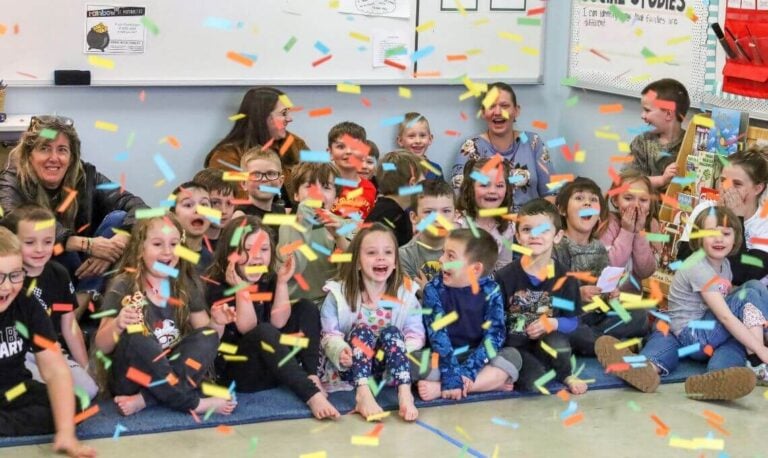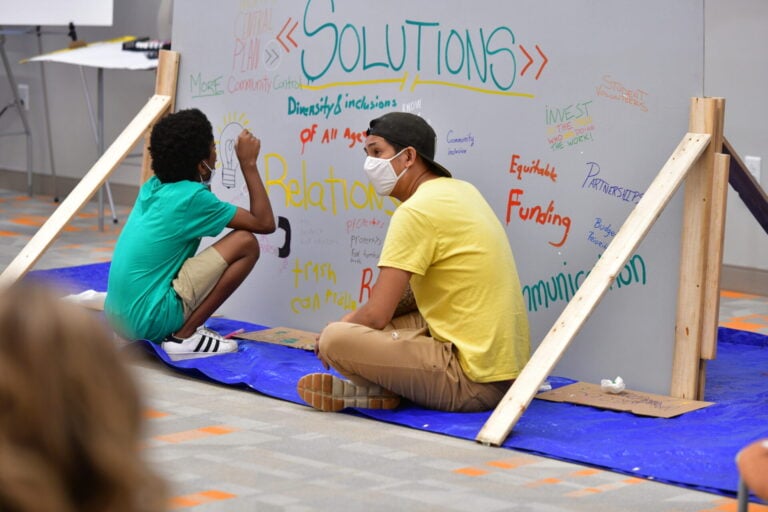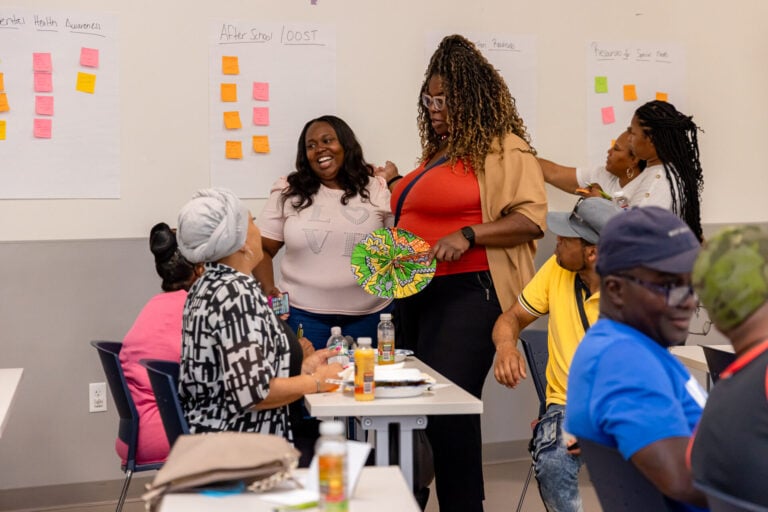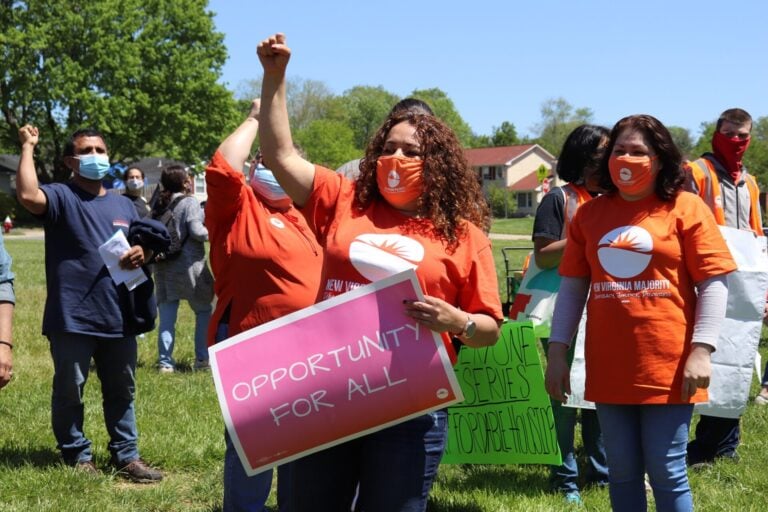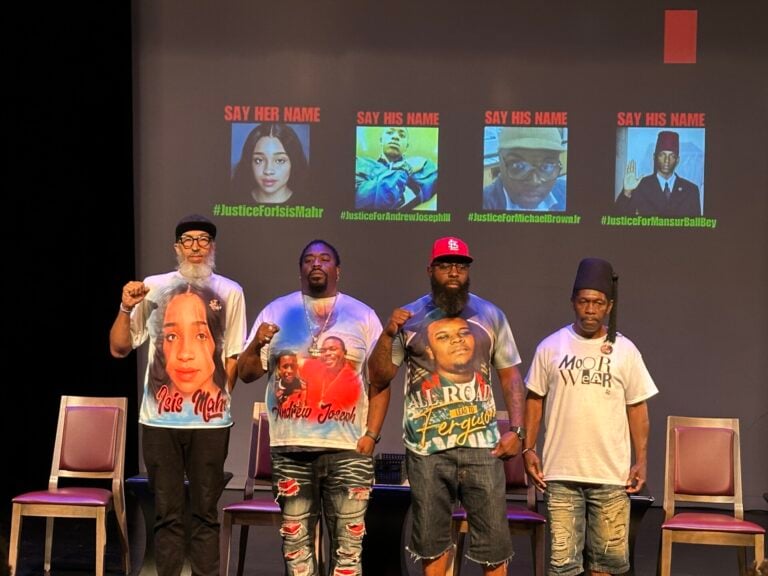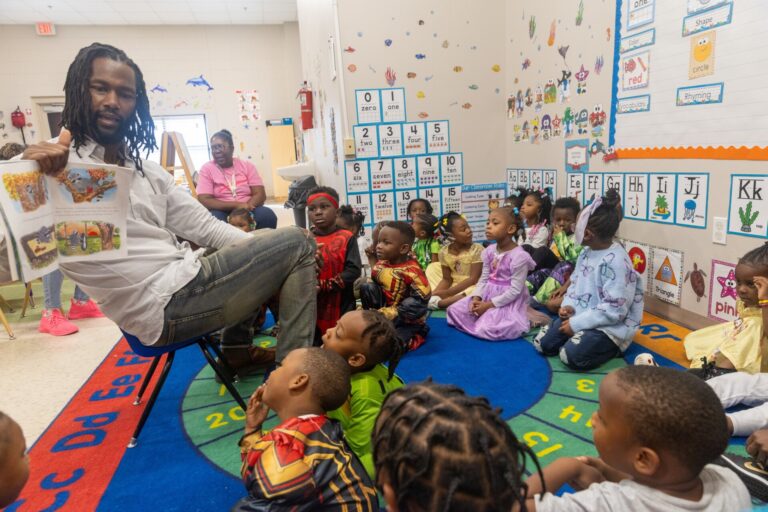Staff at Social Advocates for Youth (SAY), a California nonprofit, were considering ways to share back the results of a Listen4Good survey with the teenagers in its counseling program who gave the feedback. They thought about creating a poster for the counseling center’s waiting room or writing letters to mail to the clients and their families. Then came a eureka moment: A few survey takers had asked for more art supplies and other activities for the waiting area. And a new intern, a young artist who had expressed interest in working with data, had just started in the organization’s career-readiness program.
“It all came together in an instant,” says Heather Sweet, data director at SAY, which provides housing, counseling, and career services to young people. Over the next few weeks, Heather and her colleague Sabrina Ward worked with Andy Cunha, the intern, to create an illustrated booklet filled with survey results and featuring a coloring activity page.
With that, SAY had closed the L4G loop, delivering feedback information in an engaging format that actually doubled as a way to respond to the feedback: Its young clients, sitting in the waiting room, could read the data, then flip over the booklet and start doodling with the new art supplies provided there.
“Our primary focus is meeting youth where they are at,” Sabrina says. The booklet is “a perfect example of something that’s youth-friendly, approachable, and created by someone in their peer group.”
Andy did the design — the drawings, the colorful paint, and, even the origami-like way the booklet folds and unfolds to reveal each page – and he also consulted on the text.
“He said, let’s speak like we are talking directly to them, instead of like an adult just telling them facts,” Heather says. So with a slight edit, the ho-hum information about who took the survey, 83% of the youth were between 13 and 18 years old, became in the booklet: “83% of you are 13 to 18 years old.”
Says Heather: “He just changed it from ‘youth’ to ‘you’ and that made such a difference in tone, and maybe a difference in how closely these were read, how well we really did closing the loop.”
Andy did the design — the drawings, the colorful paint, and, even the origami-like way the booklet folds and unfolds to reveal each page – and he also consulted on the text.
“He said, let’s speak like we are talking directly to them, instead of like an adult just telling them facts,” Heather says. So with a slight edit, the ho-hum information about who took the survey, 83% of the youth were between 13 and 18 years old, became in the booklet: “83% of you are 13 to 18 years old.”
Says Heather: “He just changed it from ‘youth’ to ‘you’ and that made such a difference in tone, and maybe a difference in how closely these were read, how well we really did closing the loop.”

